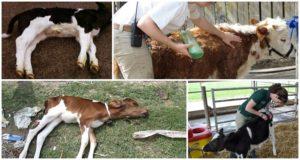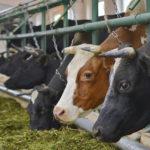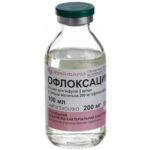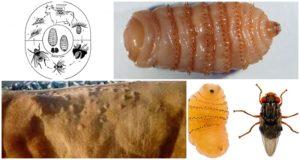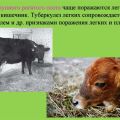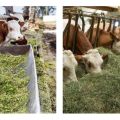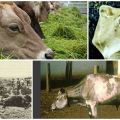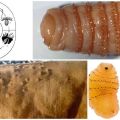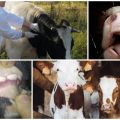Symptoms and routes of transmission of brucellosis in cattle, treatment regimen and prevention
Brucellosis is a disease of infectious etiology of cattle, which is also a danger to humans. In many animals, the consequences of pathology are spontaneous abortions, defective discharge of the placenta, inability to reproduce, the birth of dead young or early mortality. Brucellosis is a socially dangerous disease, which is why, when it is detected on farms, a quarantine regime is imposed.
What is bovine brucellosis
Brucellosis is an infectious disease transmitted from cattle to humans and manifested by multiple lesions of internal organs and systems. The pathology was discovered by the scientist D. Bruce in 1886, the pathogens were called brucella, and the disease itself was called brucellosis.
The causative agent is a group of pathogenic microorganisms that are small in size and immobile. They do not form spores, but they can form capsules. Brucella remain viable in favorable conditions for them (warm soil, manure, forage) for up to several months. Under the influence of direct ultraviolet rays, they die after 1.5 days.
The danger of the disease lies in the high risk of human infection by eating meat, milk and products prepared from it (cheese, cottage cheese, butter) obtained from cows with brucellosis. A person can become infected by contact with cattle secretions, for example, when fertilizing a summer cottage with manure from sick animals.
Transmission routes
The infectious disease is transmitted through injured skin, mucous tissues of the respiratory tract and gastrointestinal tract, as well as through punctures of the skin made by mice and blood-sucking insects.

A cow can become infected from an already sick animal. Often, the pathogen is taken from infected amniotic fluid at the birth of a calf, spread from a dead fetus during an abortion. Sources of the disease are affected fluids - urine, semen, secretions from the genital tract, milk, and feces.
How to recognize a disease
The incubation period of brucellosis lasts from one to three weeks, before a blood test does not detect antibodies to the pathogen. In most cases, the disease is asymptomatic and chronic. Often, farmers can suspect a pathology only after several abortions in adult cows occurring in the second half of gestation.Common complications of childbirth with brucellosis are the retention of the placenta with further infection of the uterus, the development of mastitis, and a prolonged increase in temperature.

Acute form
An acute illness has the following symptoms:
- temperature rise to 38 aboutFROM;
- increased sweating;
- lethargy, weakness;
- swollen lymph nodes;
- eye damage;
- inflammatory process of the heart, joints, bronchi and lungs.
There are marked pain in the ligaments, muscles, loss of appetite and weight loss.
Subacute animals
Symptoms of the subacute form are reduced to the appearance of joint inflammation (arthritis) in cows. Knee, carnal and other joints are painful and swollen. The subcutaneous tissue of the extremities, the vaginal mucosa is affected, the udder becomes inflamed. Bursitis and abscesses may form on the hind legs. Sometimes the temperature rises to 37-37.5 aboutbut declines on its own. The subacute form of the disease can last up to three to six months.
Chronic
In chronic brucellosis, the cow is sick for six months or longer. The symptoms of the disease are erased. The pathology manifests itself with low-grade fever, chronic inflammation of the joints, and damage to the spine. Involvement of the nervous system in the process causes the development of neuritis and polyneuritis.
Diagnostic methods
Since the signs inherent in brucellosis can also manifest themselves in other diseases, the main method of diagnosis is taking blood to detect antibodies to the pathogen. In parallel, pathogenic microbes are searched for in milk, amniotic fluid. Pieces of tissue from a stillborn calf are examined. An examination by the method of allergic tests is required.
The diagnosis of "brucellosis" is sometimes established posthumously, when the pathogen is detected by biopsy of lymph nodes, joints, examination of the testes in bulls.
Disease treatment regimen
It is recommended to treat brucellosis with antibacterial agents, but this group of drugs is effective in the acute form of the disease. Antibiotics stop the process of reproduction of pathogenic microorganisms and contribute to the destruction of their colonies.

Antibacterial drugs are combined with each other, they change drugs in order to avoid loss of sensitivity of the pathogen to the active substance. Combine with each other two or three drugs from the following:
- "Tetracycline";
- "Doxycycline";
- "Streptomycin";
- "Gentamicin";
- "Netilmicin".
The listed funds have a better effect on the pathogen with the simultaneous use of drugs that can penetrate into the affected tissues - "Biseptol", "Ofloxacin", "Ciprofloxacin" and "Fleroxacin" (this medication is considered the most effective).
To relieve pain and reduce the level of inflammation, agents of the group of anti-inflammatory nonsteroids are used - "Brufen", "Indomethacin". Reducing the intoxication of the body of cows is achieved by the appointment of "Methionine", "Adenosine triphosphate".
With the mass death of the pathogen in animals, a pronounced allergic reaction may appear, which is reduced by antihistamine drugs. At the stage of recovery, B vitamins and immunomodulators ("Dibazol", "Timalin") are necessarily introduced into therapy.
Vaccine and general prevention
Immediately after identifying an infected animal, it is isolated from the common stall. To avoid further spread of the disease, disinfection is carried out with bleach or caustic soda (solution of 3% concentration). General prevention involves the prevention of infection of cows in safe farms and includes:
- regular disinfection and disinfestation;
- maintaining the correct manning of herds;
- observance of sanitary and hygienic standards when feeding, drinking, keeping, mating animals;
- routine serological examinations of cattle for brucellosis.
Workers caring for animals are required to treat their hands with a solution of chloramine at 0.5% concentration or soda ash. In the barn, washstands with warm water, hygiene products and clean towels should be installed.
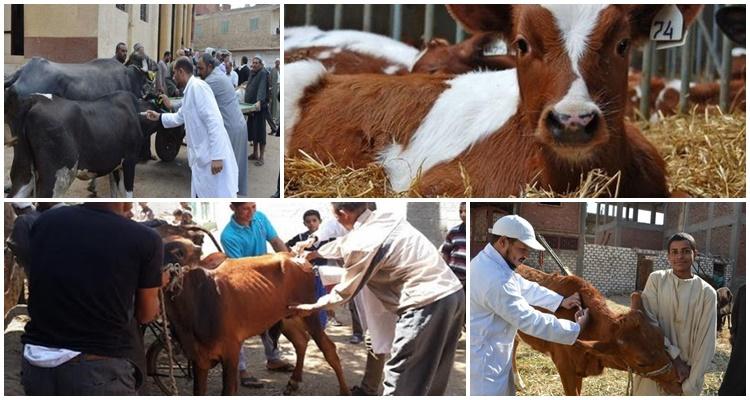
Routine vaccination is the most economical means of preventing brucellosis. Well-established and effective vaccines against cattle disease:
- Brucella abortus: CZV B-19 and RB-51 CZV;
- Brucella melitensis CZV Rev-1 and
Vaccines provide powerful and long-lasting immunity against brucellosis.
Is it possible to eat meat and drink milk from sick
When brucellosis is detected on the farm, it is declared unfavorable. Animals with diagnosed pathology and manifesting symptoms of brucellosis are sent for slaughter. It is forbidden to slaughter livestock on a farm where cattle are raised - for this, cows are sent to meat processing plants and sanitary slaughterhouses.
It is not recommended to eat the meat of sick animals, despite the fact that the causative agent of brucellosis quickly dies when boiling.
Milk and cream from dysfunctional cows should be pasteurized at 70 aboutC for half an hour or simmer for 15-20 minutes. Milk taken from cows that react to brucellosis samples is used only in animal feeding, after half an hour of boiling.
To prevent the spread of brucellosis in a successful farm, it is important to carry out frequent hygienic cleaning of stalls. The causative agent of the disease is easily destroyed by a solution of carbolic acid in 2% concentration, solutions of chloramine and bleach (concentration 0.2-1%), solutions of creolin and lysol in 3% concentration.
In order to prevent disease in humans, it is important to eat cow meat purchased at points with certificates confirming the absence of brucellosis in cattle. For prevention, milk from domestic cows is recommended to be pasteurized for 20-30 minutes.
